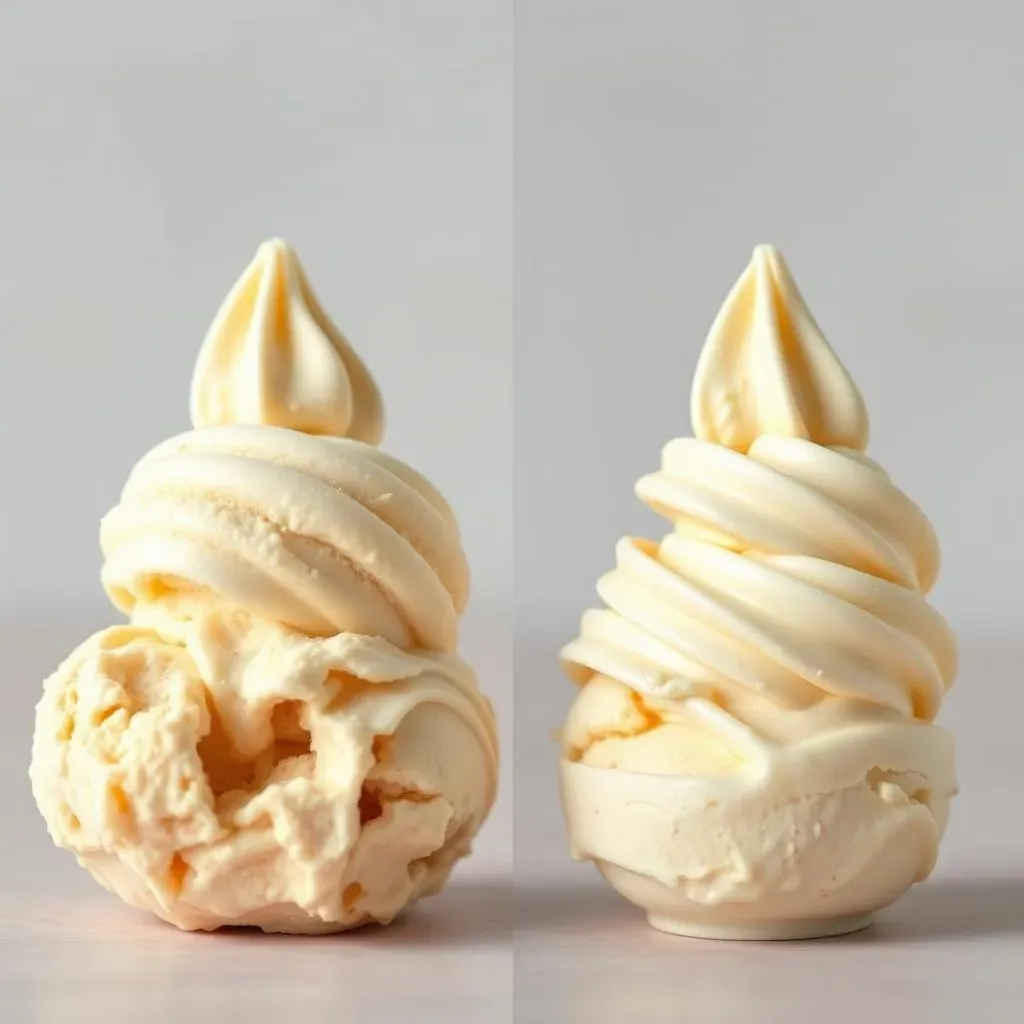Table of Contents
Ever find yourself staring into the freezer, battling the urge for a sweet, creamy treat? You're not alone. But what if you're also trying to keep an eye on your fat intake? That's where low-fat ice cream comes in, but what is low fat ice cream really? Is it just regular ice cream with less fat, or is there more to it? This article will guide you through the chilly world of low-fat ice cream. We'll explore the nitty-gritty of how it's made, what sets it apart from regular ice cream, and whether it's actually a healthier choice. We'll also look at the science behind those frozen desserts and discuss the truth about lower fat options versus the full-fat classics. So, grab a spoon, and let's dig in, shall we?
What Exactly Makes Ice Cream "Low Fat"?

What Exactly Makes Ice Cream "Low Fat"?
Fat Content Defined
so you're wondering, what exactly makes ice cream "low fat"? It's not just a random label they slap on a carton. There are actually specific guidelines that determine whether an ice cream can be called "low fat." Generally, it means the product has less fat than its regular counterpart. But how much less? Well, in many places, "low fat" ice cream needs to have 3 grams of fat or less per serving. That's a pretty big difference from regular ice cream, which can often have 10 grams of fat or more per serving. They are really trying to make a big difference.
It's not just about reducing fat, though. It's about how they achieve that reduction. This often involves altering the recipe in several ways and replacing the fat with other ingredients to maintain a similar texture and taste. Think about it, fat is what gives ice cream that creamy, smooth texture. So, when you remove it, you need a backup plan. They do this in a few ways. Sometimes they add more water, sometimes they use other ingredients like gums and stabilizers. It's a bit of a science experiment, really.
The Role of Milk Fat
The main source of fat in regular ice cream comes from milk. When producing low fat ice cream, manufacturers often use milk with a lower fat content, like skim milk or 1% milk. This simple switch makes a big difference in the overall fat content of the final product. But it's not just about using lower fat milk, it's also about adjusting the milk solids not-fat. These are the parts of milk that aren't fat or water, like proteins and lactose. They help to give ice cream its body and texture. It is all about balance.
They also might add ingredients like whey protein or nonfat dry milk to help with the texture and mouthfeel. It's a delicate balancing act. They have to make sure it still tastes like ice cream, even with less fat. That is why some low fat ice cream can taste a bit different from regular ice cream. It’s not necessarily a bad thing, just different.
Type of Ice Cream | Typical Fat Content (per serving) |
|---|---|
Regular Ice Cream | 10+ grams |
Low-Fat Ice Cream | 3 grams or less |
Other Ingredients and Techniques
To make up for the lack of fat, low-fat ice cream often includes other ingredients that help with texture and stability. These can include things like gums (guar gum, carrageenan), stabilizers, and even some artificial sweeteners. These additions help prevent the ice cream from becoming too icy or watery. They also ensure that it has a pleasant mouthfeel. I mean, no one wants to eat icy, crunchy ice cream, right?
The process of making low-fat ice cream also involves careful control of freezing and mixing techniques. This is important to make sure the ice crystals are small and uniform, which gives the ice cream a smoother texture. So, while it may seem like a simple swap of ingredients, it's a carefully engineered process to achieve a low-fat treat that still tastes good. It’s all about tricks and techniques when you are making something good!
The Science Behind Lower Fat Ice Cream

The Science Behind Lower Fat Ice Cream
Freezing Point Depression
so let's geek out a little on the science behind this chilly treat. One of the key things to understand is something called "freezing point depression." Regular ice cream has a high fat content, and these fat molecules don't freeze at the same temperature as water. They actually lower the freezing point of the water in the mixture. When you reduce fat, you're changing that delicate balance. This means the water in the mixture will freeze more easily and form larger ice crystals, which can lead to that undesirable icy texture. It's not just about removing fat; it's about how that change impacts the way the ice cream freezes.
That is why you see more stabilizers and gums being used in low-fat versions. These ingredients help to bind water and prevent the formation of large ice crystals. They also help to create a smoother texture. It's like a careful balancing act, they remove fat, but they must add something else to get back to the good texture. It's all about manipulating the freezing process to get the right result. It is like a magic show but it is based on science.
The Role of Air
Another important factor is the amount of air incorporated into the ice cream. This is called "overrun." During the churning process, air is whipped into the mix, and this makes the ice cream lighter and fluffier. In regular ice cream, fat helps to stabilize those air bubbles, but what happens when you reduce the fat? Well, it gets a little tricky. The less fat there is, the harder it is to trap air and maintain that light texture. If you don't get this right the ice cream can be dense and hard.
So, manufacturers have to use different techniques and ingredients to create the right amount of air in low-fat ice cream. They may use specific emulsifiers to help stabilize the air bubbles and create a light texture. It's all about finding the perfect balance of ingredients and techniques. This is to ensure that the ice cream is still enjoyable. It's not just about the taste; it's also about the texture and the overall experience of eating it. I think that it is very important.
Concept | Description |
|---|---|
Freezing Point Depression | The lowering of the freezing point of a liquid by the addition of another compound. In ice cream, fat lowers the freezing point. |
Overrun | The amount of air incorporated into the ice cream during churning, which affects its texture and density. |
LowFat vs. Regular Ice Cream: What's the Real Difference?

LowFat vs. Regular Ice Cream: What's the Real Difference?
Calorie and Fat Content
so we've talked about what goes into low-fat ice cream, but how does it really stack up against the regular stuff? Well, the most obvious difference is in the calorie and fat content. Regular ice cream is typically higher in both. This is because it's made with more milk fat and often has more sugar. Low-fat ice cream, on the other hand, is designed to have fewer calories and less fat per serving. It's like they are having a battle in the freezer aisle, who will be the winner.
For example, a half-cup serving of regular ice cream might have around 250-300 calories and 15-20 grams of fat, while the same serving of low-fat ice cream could have 150-200 calories and 3 grams of fat or less. That's a pretty significant difference. It's like choosing between a regular soda and a diet soda. It really depends on what you are looking for.
Taste and Texture
Now, let's talk about the taste and texture. This is where things can get a little subjective. Regular ice cream is known for its rich, creamy, and smooth texture. That's because of the higher fat content. Fat is what gives it that melt-in-your-mouth feel. When you reduce the fat, you can lose some of that creaminess. Low-fat ice cream often has a slightly different texture, it can be a little bit more icy or less dense. It really depends on the brand and the specific ingredients they use.
Some people might not even notice the difference, while others might find that low-fat ice cream doesn't quite hit the spot. The flavor can also be slightly different. Because they're using less fat, manufacturers sometimes add extra sugar or artificial sweeteners to compensate and make it more flavorful. It is like they are trying to find a way to make something taste good without using as much of the good stuff. It's a bit of a balancing act.
Feature | Regular Ice Cream | Low-Fat Ice Cream |
|---|---|---|
Calories (per serving) | 250-300 | 150-200 |
Fat (per serving) | 15-20 grams | 3 grams or less |
Texture | Rich, creamy, smooth | May be slightly icy or less dense |
Flavor | Usually rich and full | May be slightly different, often sweeter |
Ingredients and Additives
Another key area to look at is the ingredient list. Regular ice cream usually contains milk, cream, sugar, and some flavorings. Low-fat ice cream often has a longer list of ingredients. This can include things like stabilizers, gums, artificial sweeteners, and other additives to make up for the lack of fat. It is like they are trying to recreate the magic of fat with other ingredients. Some of these ingredients are harmless, but others might be a concern for people with specific dietary needs or preferences.
For example, some people might be sensitive to artificial sweeteners or certain types of gums. It is always a good idea to read the label carefully. It's also worth noting that both regular and low-fat ice cream can contain added sugars, so it's not just about the fat content. It is all about finding balance, and knowing what you are eating.
Is LowFat Ice Cream a Healthier Choice?

Is LowFat Ice Cream a Healthier Choice?
Calorie Reduction vs. Overall Health
so you're probably wondering, is low-fat ice cream actually better for you? The short answer is: it's complicated. While it’s true that low-fat ice cream has fewer calories and less fat than regular ice cream, that doesn't automatically make it a health food. It's like saying a diet soda is healthier than a regular soda, it has fewer calories, but it's still not exactly nutritious. The calorie reduction can be beneficial if you are trying to manage your weight, but you have to look at the whole picture.
The key is to think about your overall diet and lifestyle. If you're eating a balanced diet, exercising regularly, and enjoying low-fat ice cream as an occasional treat, it can be a reasonable option. But if you are relying on low-fat ice cream as a way to eat less healthy food, it is not a good idea. It is important to remember that no single food can make or break your health. It's the combination of all your habits that matters. It is all about balance and making informed choices.
Factor | Description |
|---|---|
Calorie Reduction | Low-fat options offer fewer calories, which can help with weight management. |
Nutrient Density | Both regular and low-fat ice cream are typically low in essential nutrients. |
Added Sugars | Low-fat ice cream often contains added sugars or artificial sweeteners to compensate for reduced fat. |
Overall Diet | The impact of ice cream, whether regular or low-fat, depends on your overall eating habits and lifestyle. |
The Role of Added Sugars
One thing to watch out for is the added sugar content. Often, when manufacturers reduce the fat in ice cream, they add extra sugar to make it taste better. This can be a problem because too much added sugar is linked to various health issues, like weight gain, type 2 diabetes, and heart disease. It's like they are trying to trick your taste buds into thinking it is as good as the real thing, but it can have consequences. So, it's important to check the nutrition label and compare the sugar content of different brands and types of ice cream. It is not just about the fat content; it's about the whole picture.
Some low-fat ice creams use artificial sweeteners instead of sugar. While these can reduce the calorie count, they may have other effects on your body. Some people are sensitive to artificial sweeteners, and there is ongoing debate about their long-term health impacts. So, it's important to be aware of what you're putting into your body and to make choices that align with your individual needs and preferences. It is always a good idea to do a little research before you pick your ice cream.
Making Informed Choices
Ultimately, the best way to decide if low-fat ice cream is a good choice for you is to be informed. Read the nutrition labels carefully. Look at the calories, fat, sugar, and ingredient list. Compare different brands and see what works best for you. Don't just assume that low-fat means healthy, it's about making smart choices. It's like being a detective, you need to look at all the evidence before you make a conclusion. Remember, moderation is key. Whether you choose regular or low-fat ice cream, enjoying it in reasonable portions is important.
If you are looking for a healthier alternative, consider options like frozen yogurt, sorbet, or even making your own ice cream at home using natural ingredients and less sugar. There are many ways to satisfy your sweet tooth without compromising your health goals. It is about finding what works best for you and your lifestyle. It is all about making informed and conscious choices when you eat. It is also about enjoying your food.
“The key is not to prioritize calorie reduction at the expense of overall nutrition. It’s about finding a balance between enjoying your treats and maintaining a healthy lifestyle.” - Dr. Emily Carter, Nutritionist
The Scoop on Low-Fat Ice Cream
So, we've journeyed through the frosty landscape of low-fat ice cream, uncovering what makes it different and whether it's a healthier swap. The truth is, it’s a bit of a mixed bag. While it might have less fat, it often comes with other trade-offs. It is key to not assume that low-fat means healthy. It’s all about balance and knowing what you’re actually eating. Enjoy the treat, but be mindful of what's in your bowl. Ultimately, the best choice is the one that fits your individual needs and preferences. Now, go forth and make informed ice cream decisions!
